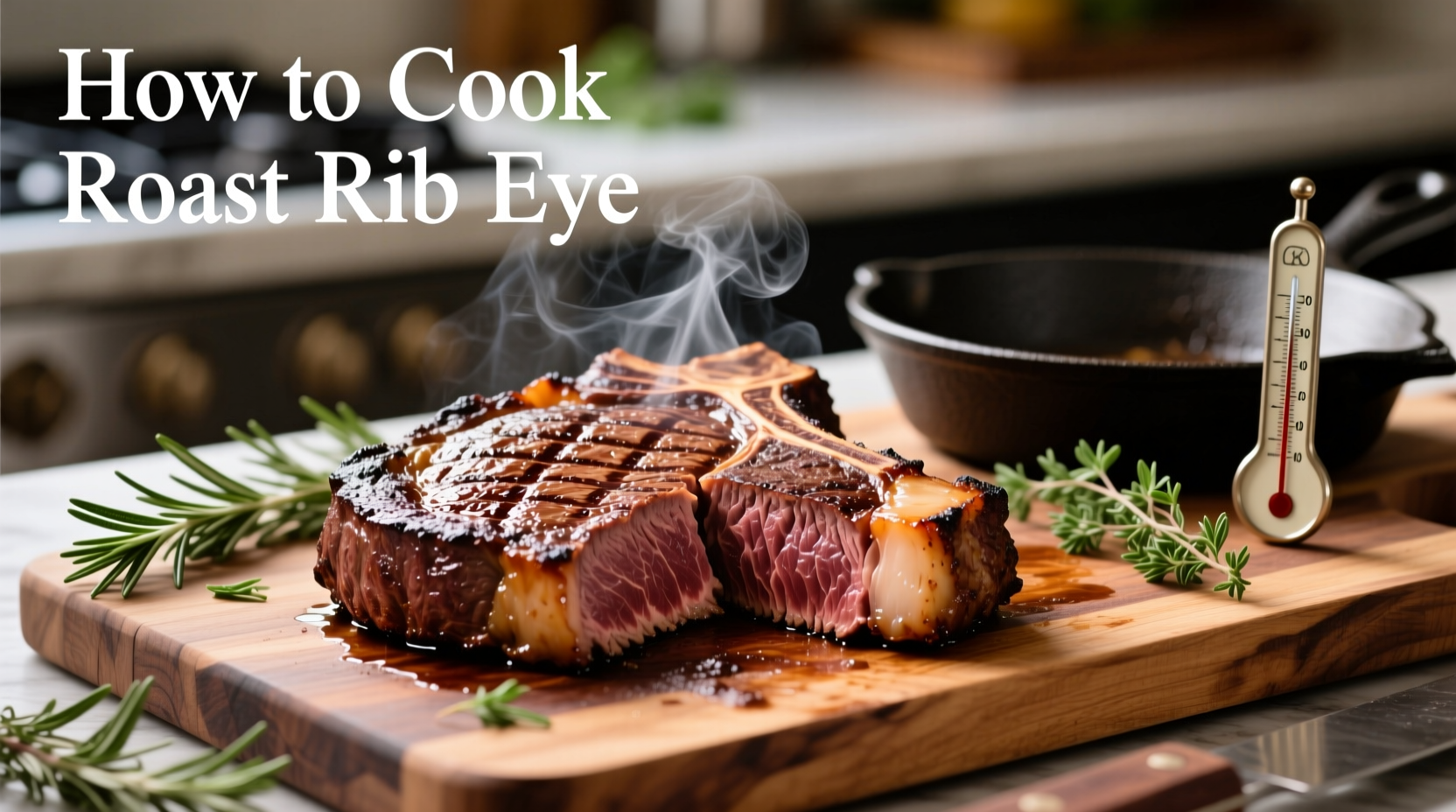Why This Rib Eye Method Works Every Time
Roasting a rib eye steak in the oven delivers consistent results that surpass stovetop cooking for thicker cuts. The two-stage temperature approach creates the ideal Maillard reaction while ensuring even cooking through the center. Unlike grill methods that risk uneven heat distribution, this technique gives you complete control over the cooking environment.
What You'll Need Before Starting
Gather these essentials to ensure success from the moment you take your rib eye out of the refrigerator:
- Prime-grade rib eye roast (4-6 pounds preferred for even cooking)
- Instant-read thermometer (critical for precision)
- Heavy roasting pan with rack
- Coarse kosher salt (1 tablespoon per pound of meat)
- Freshly ground black pepper
- Optional aromatics: garlic cloves, fresh rosemary, thyme
According to USDA Food Safety guidelines, always keep raw meat separate from other foods and maintain proper refrigeration below 40°F (4°C) until ready to prepare. Safe handling practices prevent cross-contamination and ensure food safety.
Preparation: The 24-Hour Secret to Flavor Development
For maximum flavor and texture, follow this professional technique:
- Dry brine 24 hours ahead: Pat the roast dry, then generously coat with kosher salt (no pepper yet)
- Refrigerate uncovered: Place on a wire rack over a tray to allow air circulation
- Bring to room temperature: Remove from fridge 2 hours before cooking (critical for even cooking)
- Final seasoning: Right before cooking, add freshly ground black pepper and any desired herbs
This dry brining process, recommended by culinary experts at the James Beard Foundation, draws out excess moisture while allowing the salt to penetrate deeply. The result is enhanced flavor throughout the meat rather than just on the surface.

Step-by-Step Cooking Process
Stage 1: High-Heat Sear (15-20 minutes)
Preheat your oven to 450°F (232°C) with rack in the center position. Place the roast fat-side up on the rack in your roasting pan. Insert your thermometer into the thickest part, avoiding bone. Roast for 15-20 minutes to develop a deep brown crust.
Stage 2: Gentle Roasting to Temperature (45-75 minutes)
Reduce oven temperature to 325°F (163°C) without opening the door. Continue roasting until your thermometer reads 5-10 degrees below your target final temperature. Use this precise timing guide:
| Roast Weight | Approximate Time | Target Temp (Before Resting) | Final Result After Resting |
|---|---|---|---|
| 4 pounds | 45-55 minutes | 115°F (46°C) | Medium-rare (130°F/54°C) |
| 5 pounds | 55-65 minutes | 118°F (48°C) | Medium-rare (130°F/54°C) |
| 6 pounds | 65-75 minutes | 120°F (49°C) | Medium-rare (130°F/54°C) |
Never rely solely on time—your thermometer is your most important tool. The USDA recommends a minimum internal temperature of 145°F (63°C) for whole cuts of beef with a 3-minute rest time for food safety, though many chefs prefer lower temperatures for premium cuts like rib eye.
The Critical Resting Period: Why You Can't Skip This
After removing from the oven, tent loosely with foil and let rest for 15-20 minutes. This allows:
- Redistribution of juices throughout the meat
- Carryover cooking to reach perfect final temperature
- Relaxation of muscle fibers for maximum tenderness
Cutting too soon causes precious juices to spill onto the cutting board rather than staying in the meat. This single step makes the difference between a dry roast and a succulent masterpiece.
Troubleshooting Common Rib Eye Problems
Problem: Uneven Cooking
Solution: Always bring meat to room temperature before cooking. For roasts over 5 pounds, consider rotating the pan 180 degrees halfway through cooking to account for oven hot spots.
Problem: Pale, Unappetizing Crust
Solution: Ensure your oven is properly preheated and don't skip the initial high-heat sear stage. Pat the roast completely dry before seasoning—moisture is the enemy of browning.
Problem: Overcooked Center
Solution: Invest in a reliable instant-read thermometer and check temperature frequently during the final 15 minutes of cooking. Remember that temperature will rise 5-10 degrees during resting.
Perfect Serving Technique
Use a sharp carving knife and slice against the grain into ½-inch thick portions. For a standing rib roast, remove the bones first by slicing along the bone, then carve the roast. Serve immediately while the exterior remains crisp and the interior stays juicy.











 浙公网安备
33010002000092号
浙公网安备
33010002000092号 浙B2-20120091-4
浙B2-20120091-4